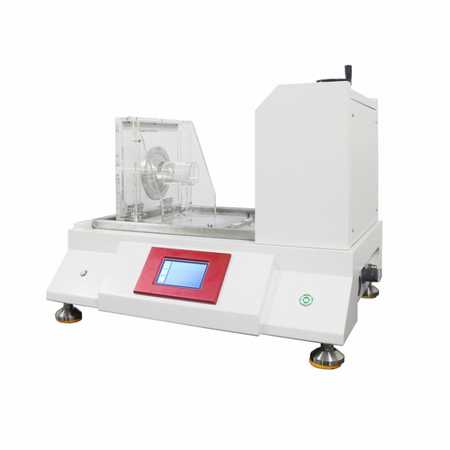-
Synthetic Blood Penetration Test for Medical Masks: Methods and Standards
Edited by:Read:Medical masks are an important protective item against respiratory infections and are effective in blocking the transmission of droplets, blood and other fluids. In order to evaluate the protective performance of medical masks, synthetic blood penetration testing is required, which simulates what happens when a mask is exposed to a high-pressure jet of blood or other liquid and tests whether the mask is able to prevent the liquid from penetrating into the inner layer.

The synthetic blood penetration test is performed by spraying synthetic blood at a certain pressure and distance into the outer layer of the mask, and then observing whether there are penetration marks in the inner layer of the mask. If there is a penetration trace, the protective performance of the mask is not up to standard; if there is no penetration trace, the protective performance of the mask is up to standard. The standard of synthetic blood penetration test is: according to different use occasions and risk levels, there are three levels, namely level 1, level 2 and level 3. the test pressure of level 1 is 10.6 kPa, the test pressure of level 2 is 16.0 kPa, and the test pressure of level 3 is 21.3 kPa. the mask is required to have no penetration marks under the corresponding test pressure.
Synthetic blood penetration test is an important part of the quality control of medical masks, which can effectively protect the safety of health care workers and patients. By understanding the methods and standards of the synthetic blood penetration test, we can better choose the right medical mask to provide effective protection for ourselves and others.
- 2024-04-19Paper ring compression strength tester standards
- 2024-04-19Cupping tester standards
- 2024-04-19Rubber and plastic tensile tester standards
- 2024-04-19Taber 1750 wear-resistant tester standards
- 2024-04-19Stone Chip Resistance Gravelometer standards
- 2024-04-18Diaper absorption speed tester standards
- 2024-04-18Diaper leakage tester technical indicators
- 2024-04-18Paint film impact resistance tester standards
- 2024-04-18Low temperature brittleness tester principle
- 2024-04-18Battery separator permeability tester technical indicators



